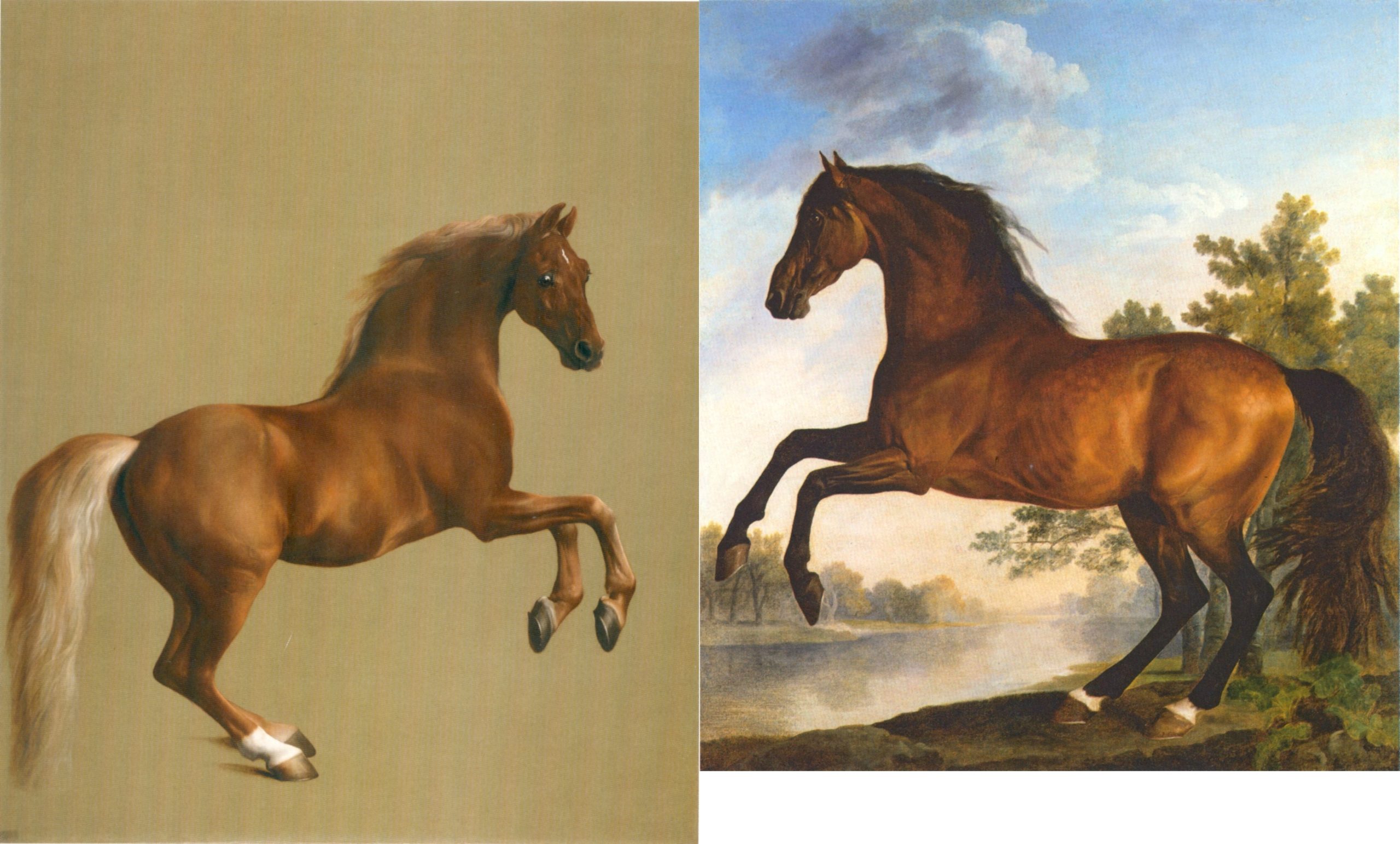Whistlejacket and Scrub, two contrasting horse portraits by George Stubbs

Left: Whistlejacket, 1762, canvas, 292×246 cm, National Gallery, London
Right: Scrub, c. 1762, canvas 268×244 cm, The Earl of Halifax
Both paintings were commissions by the Marquess of Rockingham to George Stubbs. Scrub was successful in the races and at stud, while Whistlejacket was much less successful, but yet Whistlejacket became famous and Scrub did not. The reason lies in the difference between their portraits. The Marquess had in mind to have an equestrian portrait of the new King George III, but he dropped this idea when he saw the portrait of Whistlejacket with its appealing appearance and colour, without rider and without background. In this painting Whistlejacket does not at all seem meant to be ridden, because it moves freely as a stallion at liberty and shows a natural beauty, which is conform to our sense of elegance and aesthetics. Whistlejacket was chosen because it was a very fine example of the Arabian influence in the English thoroughbred, a breed that was being developed in that time. Whistlejacket’s huge portrait is on view in the Mauritshuis, The Hague, in the first Stubbs exhibition in the Netherlands, until June 1, 2020.
The portrait of Scrub is fascinating for very different reasons. This horse has an appearance that does seem meant to be ridden. It moves like a well-trained mount with its head in a position as if it was controlled by the reins in the hands of the rider. The behaviour of Scrub almost invites a rider to enjoy its movements and its sensitivity to his or her aids. This huge painting also proves Stubbs’s mastery in rendering the fine details of the horse’s body, but Scrub does not have the glamour that Whistlejacket has. Unfortunately the Marquess did not purchase it and Stubbs always kept it in his workshop, except for an unsuccessful trip to India in 1785. The painting returned damaged and Stubbs restored it. In 2007 it was restored again, while still in a private collection.